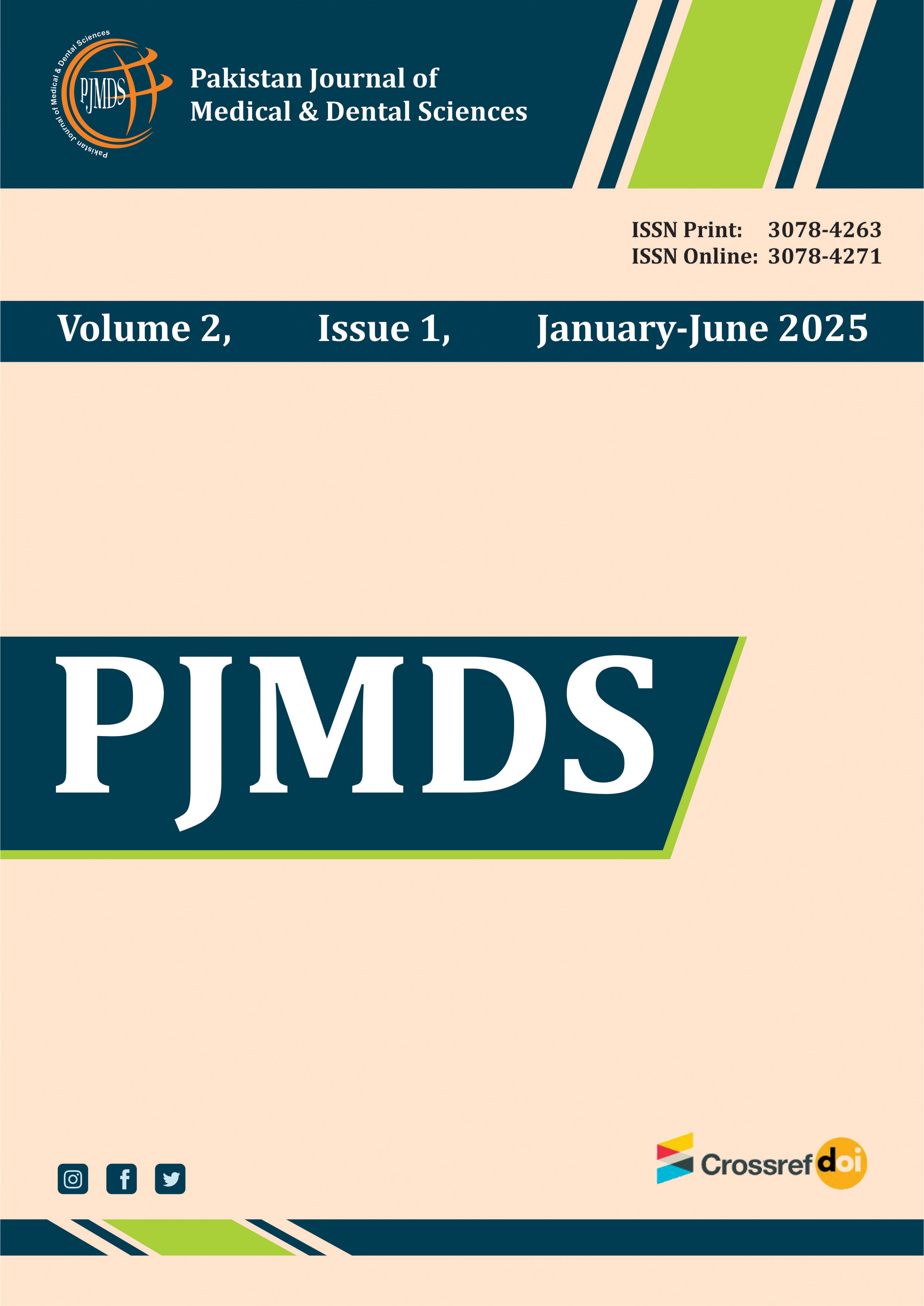FREQUENCY OF DEPRESSION IN PATIENT PRESENTING WITH THYROID DYSFUNCTION
Abstract
Objective:
To determine the frequency of depression in patient presenting with thyroid disorder at tertiary care hospital.
Methodology:
This cross-sectional investigation was executed over an eighteen-month period from December 2022 to June 2023 within the Department of Psychiatry at DUHS, Karachi. A total of 231 subjects, ranging in age from 18 to 70 years, were recruited through non-probability consecutive sampling methodology. The assessment of depression was conducted utilizing the Hamilton Depression Rating Scale (HAM-D). The data were subjected to analysis via SPSS version 26.0. The evaluation of statistical significance was performed employing the Chi-square test, with a p-value of ≤ 0.05 deemed indicative of significance.
Results:
Among a cohort of 231 participants (mean age 37.52 ± 11.38 years; 64.1% within the age range of 18–40), a significant association with depression was exclusively observed in relation to marital status, wherein individuals who were divorced exhibited markedly elevated odds (OR=11.010, P=0.000). Despite the predominance of male participants (90.5%), neither age (P=0.363) nor gender (P=0.533) demonstrated a significant association. Furthermore, thyroid dysfunctions did not reveal any significant relationship with depression (P=0.961).
Conclusion:
The overall incidence of depression among individuals diagnosed with thyroid dysfunction was significant; nevertheless, no statistically meaningful association was identified between the specific type of thyroid disorder and the manifestation of depression. Marital status, particularly the condition of being divorced, surfaced as a notable predictor of depression within this demographic. Further longitudinal studies are required to explore causality and the mediating role of psychosocial factors in thyroid-related depression.
Keywords:
Depression, Hamilton depression rating scale, Subclinical hyperthyroidism, Thyroid disorder
Published
How to Cite
Issue
Section
License
Copyright (c) 2025 Pakistan Journal of Medical & Dental Sciences

This work is licensed under a Creative Commons Attribution 4.0 International License.






